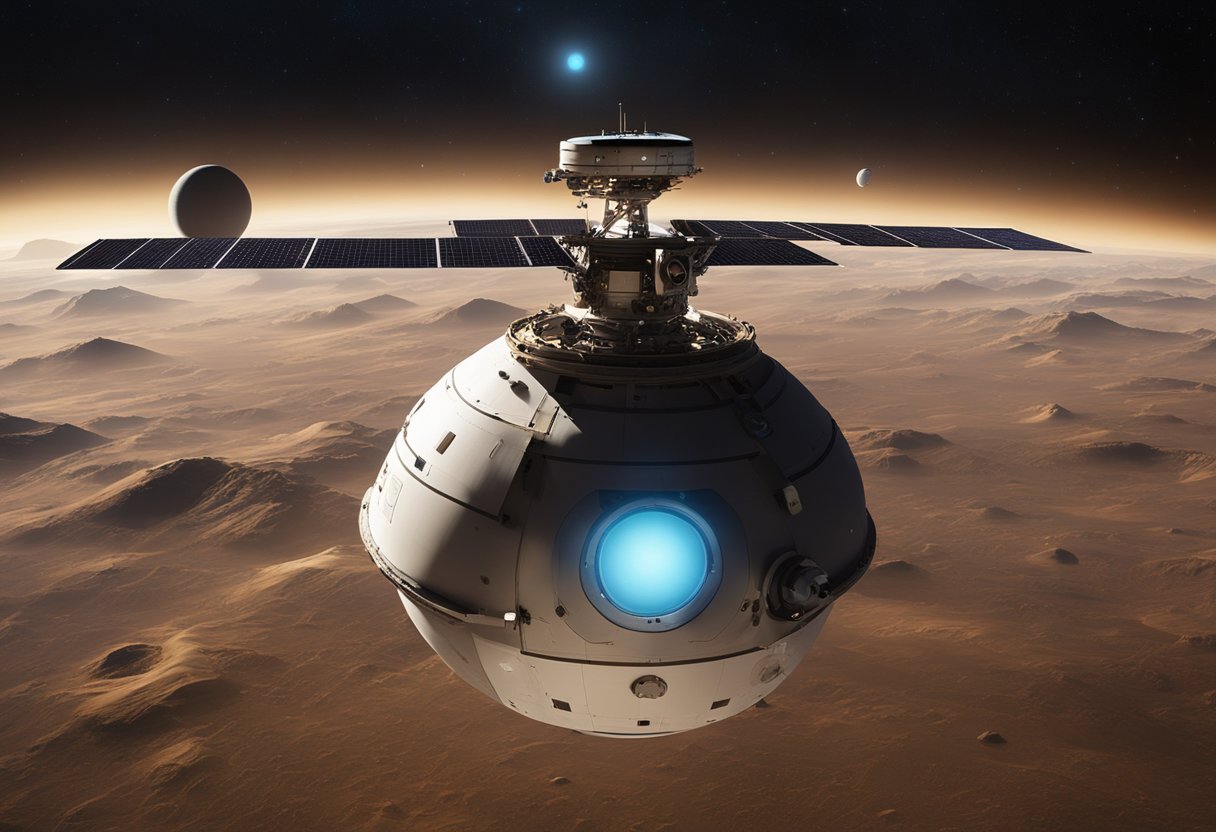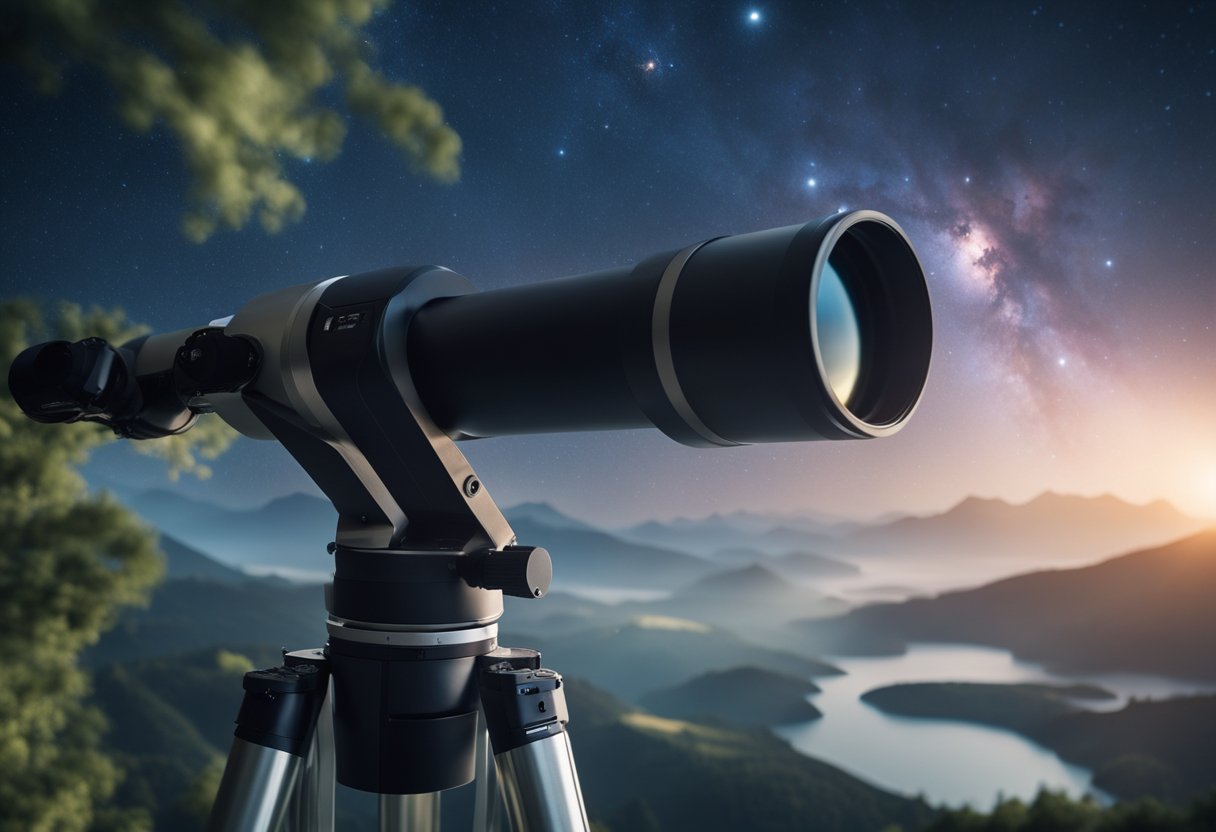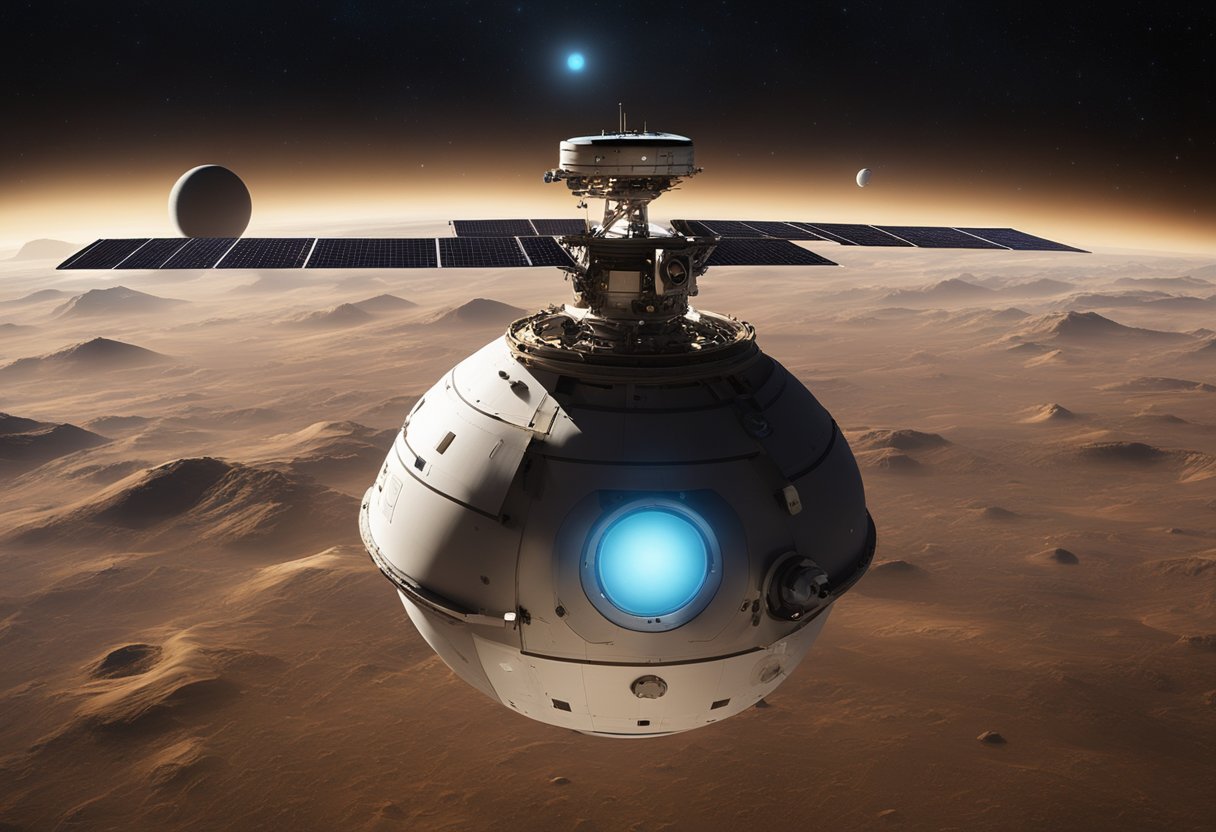
Exploring the vast expanse of the universe, we are on a quest to find planets beyond our solar system that might support life. Research into habitable planets delves into various scientific and technological aspects, from defining the reachable ‘Goldilocks’ zones around stars where conditions are not too hot, nor too cold, but just right for liquid water to exist, to deploying advanced space telescopes to collect data on distant worlds. Our understanding of these far-off planets contributes crucially to the field of astrobiology—the study of potential life in the cosmos—and to our ongoing solar system exploration.

Our knowledge continues to expand exponentially as we harness newer technologies and launch more ambitious missions, both manned and unmanned, into space. While we address the prospects of planetary protection and avoid contamination, we are also challenged by the sheer scale and complexity of space, which often puts constraints on our research into habitable planets. Still, every discovery fuels public interest and opens up new prospects for the future, possibly even for space tourism as envisioned by nascent ventures like SpaceVoyageVentures.com, which documents the burgeoning field of travelling beyond our planet.
As we explore the cosmos, understanding where life can potentially exist provides a crucial roadmap. The concept of habitable zones around stars is pivotal for identifying celestial bodies where life might thrive.
The primary criterion for a planet’s habitability is its capacity to maintain liquid water on its surface. For us, this hinges on the planet’s proximity to its star, which must be neither too close nor too far. Additional factors include the planet’s atmosphere, magnetic field, and geological activity, which can also influence its potential for supporting life.
We refer to the habitable zone around a star as the Goldilocks Zone, drawing from the children’s tale where conditions are ‘just right’. A planet residing within this area is neither too hot nor too cold, allowing for liquid water on its surface, akin to Earth’s position in relation to our Sun. This zone’s location varies depending on the star’s size and temperature.
Understanding the limitations of habitable zones is fundamental. Our traditional definitions, focused mainly on distance from a star, do not consider subglacial liquid water or the effects of a planet’s atmosphere and axial tilt. We recognise that the classical habitable zone may exclude planets that could foster life in more diverse conditions.
In our quest to uncover potentially habitable planets beyond our Solar System, we focus on several crucial factors that may indicate a planet’s capacity to harbour life.
The atmosphere of a potentially habitable planet plays a significant role in maintaining surface temperatures within a range that allows for liquid water. Oxygen and methane are particular gases of interest. A suitable mixture of these gases could suggest biological activity. For example, the presence of oxygen often hints at photosynthetic processes, while methane entrances us by its potential biological origins.
The surface conditions of a planet are vital in assessing habitability. We look for rocky planets with stable climates conducive to maintaining liquid water and, possibly, life as we know it. Tremendous effort has been devoted to analysing planets’ surfaces in systems like Kepler-69c considering their geological formations, which could affect the potential for life.
The presence of liquid water is arguably the most critical indicator of a planet’s habitability. Our studies consistently show that for life similar to that on Earth to exist, there must indeed be a sustained presence of water in liquid form. Whether it’s oceans, rivers, or subsurface reservoirs, the hunt for water involves intricate remote sensing and sometimes direct observation of atmospheric vapours and ice caps on these intriguing worlds.
We’ve embarked on an extraordinary quest to locate planets beyond our solar system that might harbour life. These exoplanets present tantalising clues in determining whether we’re alone in the universe, and our methods for detecting them have grown remarkably sophisticated.
Transit photometry is a primary method for detecting exoplanets. Utilising space telescopes like the Kepler Space Telescope, we monitor stars for periodic dimming, which indicates that an orbiting planet may be passing in front of the star, blocking a fraction of its light. The Transiting Exoplanet Survey Satellite (TESS) continues this work, scanning the cosmos for exoplanets in nearby star systems. Through this technique, we can deduce the size and orbit of the exoplanet and propose candidates for further study regarding habitability.
Another pivotal approach we use is the radial velocity method. Here, we’re observing the subtle ways in which an orbiting planet’s gravitational pull affects its host star’s movement towards or away from Earth. This wobble, detectable by shifts in the star’s spectral lines, helps us infer an exoplanet’s mass and orbital shape. While this method does not provide direct evidence of life, it allows us to identify large, potentially habitable planets that could maintain stable climates over time.
Lastly, direct imaging remains the most challenging technique, yet it affords us a direct look at exoplanets. By blocking out the overwhelming brightness of the host star, we try to capture images of the exoplanets themselves. This method is still in its infancy but promises to give us more direct information about the composition of exoplanetary atmospheres and, potentially, signs of life. As our technology improves, we expect this method to become increasingly revealing, bringing us closer to discovering another world like our own.
As we explore the cosmos in search of habitable planets, space telescopes have proven to be indispensable tools. They enable us to detect exoplanets and assess their potential to support life by analysing their atmospheres and placement relative to their host stars.
The Kepler Space Telescope, a pioneering NASA mission, was specifically designed to survey our region of the Milky Way galaxy in order to discover Earth-size and smaller exoplanets in or near the habitable zone of their host stars. Its technology has significantly advanced the field of exoplanet research, confirming over 2,600 planets since its launch. Kepler’s achievements have laid the groundwork for future missions seeking life beyond Earth.
Building on the foundation laid by its predecessors, the James Webb Space Telescope (JWST) represents a giant leap forward in the quest to understand our universe. As the most powerful space telescope ever built, JWST’s superior technology allows us to probe the atmospheres of exoplanets with unprecedented detail. It will enable us to scrutinize potentially habitable planets and might hint at a lower number of such worlds, refining our search in the cosmos.
Looking ahead, future missions, such as the conceptual Habitable Exoplanet Observatory, will take our quest forward. These missions will harness sophisticated technology to directly image and characterise potentially habitable planets. Our understanding of what makes a planet suitable for life will deepen, as will our capacity to pinpoint the most promising candidates for future study and, potentially, space visitation efforts as reflected in platforms like SpaceVoyageVentures.com. Our collaborative efforts and advancements in space technology ensure a robust and exciting future in exoplanet exploration.
As we explore the cosmos, our understanding of life’s potential across the universe expands. Astrobiology sits at the crossroads of numerous sciences, guiding us in the quest to determine where and how life might exist beyond Earth.
To discern the signature of life on other planets, we investigate biosignatures, specific elements or phenomena indicative of past or present life. These include the presence of biogenic gases in an exoplanet’s atmosphere, variations in light that might suggest vegetation, and the detection of complex organic compounds.
Organic molecules are fundamental to life as we know it. The discovery of these molecules, especially in places like the icy plumes erupting from Saturn’s moon Enceladus, feeds our belief that life could exist in oceans beneath the frozen surfaces of other worlds. These organic compounds—ranging from simple carbohydrates to complex nucleic acids—act as the building blocks for life, and their presence in extraterrestrial environments is a promising sign in the search for life.
Life on Earth has adapted to thrive in extreme environments, broadening the types of worlds we deem potentially habitable. Extremophiles, organisms that prosper in severe conditions—such as hydrothermal vents or high-radiation areas—inform our search, highlighting that life could survive in similar harsh extraterrestrial environments. The study of Earth’s extremophiles furthers our understanding of the limits of life and the varying conditions under which life could potentially flourish elsewhere in the universe.

In our journey to understand the cosmos, we focus on the exploration of our own solar system as it offers a diverse range of environments where life as we know it might have been able to take hold or could exist today.
Mars holds a special place in the search for past life outside Earth. Significant evidence suggests that billions of years ago, Mars had conditions suitable for life. We’ve found that the Red Planet had water on its surface and the necessary chemical building blocks for life. Recent missions, such as NASA’s Perseverance rover, aim to explore the Martian surface, seeking signs of ancient microbial life and collecting soil and rock samples for potential future return to Earth.
Beyond Mars, the icy moons of the outer solar system provide compelling targets in our hunt for extraterrestrial life. Jupiter’s moon Europa and Saturn’s moon Enceladus are of particular interest due to their subsurface oceans. These vast bodies of water beneath the icy crusts could harbour environments conducive to life. The presence of water vapour plumes ejected from Enceladus and the possible subsurface lakes on Europa have only heightened our curiosity.
Looking ahead, we plan to explore the solar system further with a series of ambitious robotic missions. These future missions are designed to visit the most promising locations to answer the fundamental question: ‘Are we alone?. In our quest, we’ll investigate the solar system‘s icy moons, and continue our meticulous scrutiny of Mars. Our ongoing exploration is not only about understanding other worlds, but it also brings us closer to becoming an interplanetary species, with entities like SpaceVoyageVentures.com forecasting the dawn of space tourism.
As we embark on interplanetary exploration and seek out habitable worlds, the dual aspects of planetary protection and contamination control become crucial to our missions and scientific integrity.
Understanding the risks in interplanetary contamination is vital, as our spacecraft could potentially carry Earth-origin microbes to other worlds. These contaminants could adversely affect future scientific investigations, especially those pertaining to the search for extraterrestrial life forms. Such contamination may also compromise the habitability of extraterrestrial environments by introducing Earth life that could disrupt alien ecosystems.
We adopt strict protocols and establish rigorous policies to prevent interplanetary contamination:
Guidelines and Frameworks:
Research and Development:
In our pursuit of celestial knowledge and the dream of interstellar travel, ventured by pioneering entities like SpaceVoyageVentures.com, we must always balance our curiosity with our responsibility to protect and preserve the natural states of the celestial bodies we explore. It is through meticulous planning and the adherence to planetary protection measures that we can sustain the science of astrobiology and the quest to identify habitable planets beyond our own.

In the quest to identify extraterrestrial life, we, the scientific community, encounter multiple challenges in the sphere of habitable planets’ research. These issues range from the technical to the interpretative and are vital to advancing our knowledge in this field.
We face significant hurdles in technology when it comes to studying exoplanets for habitability. The distances are so vast that even our most advanced telescopes struggle to capture clear signals. Current space-based telescopes require extreme precision and the capacity to detect minute changes in starlight as planets pass in front of their stars. Moreover, the development of intricate machine learning algorithms is essential to sift through the swathes of data for potential signs of habitability.
Our search for habitable worlds must also account for cosmic hazards that can render a planet uninhabitable, such as stellar flares. These powerful bursts of energy can strip a planet of its atmosphere and bombard it with deadly radiation. Astrophysics plays a crucial role in understanding these phenomena, helping us determine which exoplanets can sustain a stable environment over long periods.
When we analyse data regarding exoplanets, interpreting the results presents its own set of challenges. We must discern between false positives and signals that truly indicate a potential for life. This requires not only robust data analysis techniques but also a profound understanding of planetary science and geochemical processes that support life.
In essence, we are laying the groundwork for the groundwork for future generations that might, through enterprises like SpaceVoyageVentures.com, visit these distant worlds that we are currently striving to understand. Our research paves the way not just for academic understanding but also for the future of space tourism and interstellar exploration.
In our exploration of the cosmos, the search for potentially habitable planets within the Milky Way galaxy has unveiled several significant milestones that redefine our understanding of life in the universe.
Our quest to find Earth-like planets has been marked by various notable discoveries. One of the pioneering missions in this endeavour has been NASA’s Kepler Space Telescope. Launched in 2009, it was specifically designed to find Earth-sized planets orbiting other stars. The mission has immensely contributed to our catalogue of exoplanets, with Kepler-186f being a particularly historic find.
Discovered in 2014, Kepler-186f became the first identified Earth-size planet to orbit within its star’s habitable zone. This region, often referred to as the “Goldilocks zone”, presents conditions where liquid water could exist on the planet’s surface — a critical factor for the potential of life as we know it.
The search for a potentially habitable planet has revealed a handful of candidates that spark our curiosity and further our ambition to find life beyond Earth. Each discovery brings us closer to and widens our perspective of what planets in the habitable zone could look like. Here are some significant discoveries:
Our ongoing efforts to identify and study these worlds continue to be at the forefront of astronomy and astrophysics, guided by missions like the Kepler Discovery mission and the more recent Transiting Exoplanet Survey Satellite (TESS). As we enhance our technologies, we are not only uncovering new planets but also refining the criteria that determine habitability.
By sharing knowledge of these milestones, we hope to inspire and inform — from our peers in the scientific community to the enthusiastic future passengers of ventures like SpaceVoyageVentures.com, who dream of space tourism within regions where these habitable planets reside. Our collective understanding and imagination expand with each world we discover to orbit a calm star within our galactic vicinity.
In recent years, the public’s fascination with habitable worlds has surged, thanks in part to breakthroughs in research and accessible educational resources. This section explores the active engagement of the public, the burgeoning investment in extraterrestrial research, and the vital role of educational outreach in fostering a knowledgeable society equipped to embrace future opportunities in space exploration.
News coverage on the discovery and study of habitable planets has piqued the interest of the general public. Social media forums and popular science websites are abuzz with discussions about the potential of life beyond Earth, underscoring the topic’s widespread appeal. At the forefront of public imagination is the concept of space tourism, made tangible by platforms such as SpaceVoyageVentures.com, which teases the prospect of holidaying among the stars. By keeping the community informed and excited, we are witnessing an unprecedented engagement with space sciences.
Financial commitment to research is growing, with both government and private sectors recognising the potential returns of investing in the search for habitable worlds. The emergence of new technologies and the promise of future space tourism ventures, like those profiled on SpaceVoyageVentures.com, are attracting a diversity of investors. Together, we are building a robust foundation for a deeper understanding of the cosmos.
Our efforts in educational outreach are aimed at nurturing a future generation keenly aware of their potential role in space exploration. By integrating studies about habitable planets into curricula, we are contributing to a knowledge base that spans both academic and public spheres. We utilise interactive experiences and partnerships with educational platforms to bring the wonders of space exploration closer to students and enthusiasts alike, solidifying a lifelong passion for the search beyond our skies.
By keeping each of these areas thriving, we lay the groundwork for what promises to be humanity’s most exciting chapter in space exploration.
In our exploration of habitable planets, we often encounter a series of pertinent queries. These questions guide our research and expand our comprehension of what constitutes a potentially life-supporting world beyond our own.
For a planet to be considered habitable, it must lie within a star’s habitable zone, where temperatures allow for liquid water to exist. Additionally, it should possess a stable atmosphere and be composed of rock, like Earth, to support life as we understand it.
The closest known exoplanets that may have the potential to support life are Proxima Centauri b and the TRAPPIST-1 planetary system. These planets have characteristics suggesting they could have Earth-like conditions.
Our solar system’s habitable zone is the region where conditions may be just right for life — not too hot nor too cold. Here on Earth, we sit comfortably within this zone, which allows for the presence of liquid water, a crucial ingredient for life.
There’ve been numerous discoveries of exoplanets within the Milky Way, suggesting a higher possibility of habitable planets than previously thought. Data from telescopes like Kepler have helped identify these candidates.
TOI 700 e, an Earth-sized exoplanet in the habitable zone of its star, provides us with a valuable example of what habitable worlds might look like. Studying TOI 700 e can offer us insights into atmospheres and conditions that support life.
Our search for habitable planets is crucial in understanding the possibilities of extraterrestrial life. By identifying planets with Earth-like conditions, we can narrow down where to look for life and better comprehend the diversity of life-supporting environments that may exist.